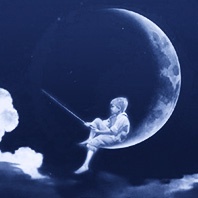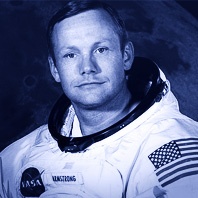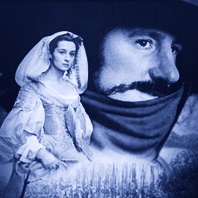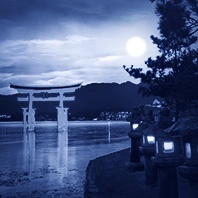Sir Charles Spencer Chaplin (1889–1977) is considered one of the first movie stars ever and made film history with his acting and his works. He is also one of the few artists who managed the transition from silent films to sound films.
Because of using archetypal imagery and symbols in his films, it is natural that the moon could also play a part somewhere. We found four references:
Read more
Times and times again, you read about the possibility to purchase lunar property. Is this to be taken seriously or more of a gimmick or a clever sales idea? If looked at more closely, some astonishing details are coming to light …
When the manned space flight started in the 60s and a trip to the Moon became more likely, nations tried to regulate the topic such as ownership in space, and created an »Outer Space Treaty« in 1967, which prohibits states to use space or its celestial bodies for self-serving or military purposes. This treaty was signed by 98 states, amongst them the superpowers, at the time USA and Soviet Union.
Read more
»Moonstruck« is a romantic comedy from 1987, where next to Cher and Nicholas Cage, the full moon plays a leading part. It can be seen countless times in the film, in the night sky, quite differently compared to »Sleepless in Seattle« for example, where you can only see it on the movie poster. The word »moonstruck« in the title, refers little to the subject of sleepwalking, but rather to the fact that human behavior can be quite peculiar at times during the full moon.
Read more
Maybe it lies within the plan of creation that we are so susceptible to everything that is bigger than what we already know or have already experienced. However, the following merely relates to heavenly bodies …
As we recently wrote in our article »Sun and moon the same size?« here in our full moon blog, the moon changes its distance to earth due to its unusual orbit and subsequently appears to be of a different size for the observer here on earth, depending on how close it is to earth at the time. Is the moon (or another heavenly body) as close to earth as possible, one speaks of perigee, and if it is the furthest away, it is called apogee. You can confidently forget these terms again, however, you may want to memorise that the moon can appear to us in different sizes.
Read more
Let us still stay with the music for a little while and let us bring our attention to a grand musical genre of theatre, the opera. We recently saw TOSCA (from Puccini) in Madrid and lo and behold! In the first act, we suddenly heard »luna piena«, which is Italian for full moon. A real highlight!
Then we had the idea to rummage through some libretti (opera lyrics) to find out if the full moon motif may also play a part in other operas. For this purpose, one can view the libretti online. We were interested in particular in the actual mentioning of it, as these were created by the composers themselves, whereas the appearance of the full moon on stage was usually the part of the stage designer.
Read more
The American film studio DreamWorks SKG was founded by movie director Steven Spielberg, Disney head of animation Jeffrey Katzenberg and music producer David Geffen, in 1994 (the initials of the founders create the “SKG” in the company’s name). The opening credits of its movies, DreamWorks shows a boy, who sits on the waxing crescent moon while fishing and being surrounded by impressive cloud formations.
Read more
Neil Alden Armstrong (1930–2012) was a US American astronaut, who was the first man to set foot on the Moon as the commander of the Apollo 11 mission on 20th July 1969, 8:17:58 pm (UTC), and hence the first to step on a foreign celestial body. The mission was preceded by fierce competition about the “reign” of space, between the then superpowers USA and Soviet Union, so that the success of Apollo 11 turned out to not only have a historical meaning but also had a political relevance.
Read more
Japanese woodblock prints have a centuries-long tradition and stand for high quality craftsmanship and artistic expressiveness. In particular, when realizing that this printing technique has been practiced since the 8th century (when letterpress printing in Europe was still a distant prospect), it becomes clear what kind of cultural achievements can be associated with this. A woodblock print works just like a stamp that has been carved into a block of wood. Then the color is applied onto the wood and printed onto paper. If you want to print a variety of colors on top of each other, you need a separate woodblock per each color and hence receive the characteristic depth effect.
Read more
Cyrano de Bergerac (1619–1655) was a French writer, who was less famous for his own pieces [*], but better known through the writings about him by Edmond Rostand (1868–1918) from 1897. The piece was called just like himself “Cyrano de Bergerac” and premiered as a stage play in Paris in the same year.
Up until today, it has been staged and filmed many times. The movie that is surely most famous is the one with Gerard Depardieu in the leading role from 1990. All dialogues are versified, which lends everything a historicizing but also an intense, poetic effect.
Read more
Bathing during the full moon or in the full moon light, is a fascinating experience, which one or the other has surely made. Two ways to interpret this is either bathing in the water at the full moon (outdoors or in the bath tub), or bathing directly in the moonlight (when the light of the Moon shines onto your skin, just like sunbathing).
Read more
Japan has a custom, which is called “Tsukimi” or also “Otsukimi” that literally means “moon-viewing” (tsuki = jap. Moon). This tradition dates back to the Heian period (794–1192) where Japanese culture and the arts were refined to a high degree. At that time, elements of the Chinese “Mid-Autumn Moon Festival” were introduced in Japan, and festivals and rituals were held in the eighth sun month (which corresponds to September in our current calendar).
Read more










